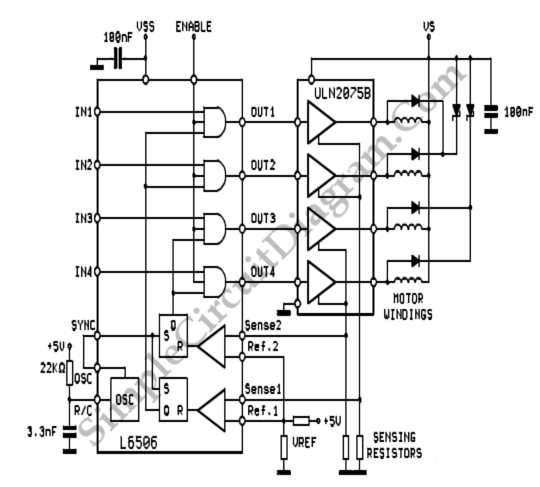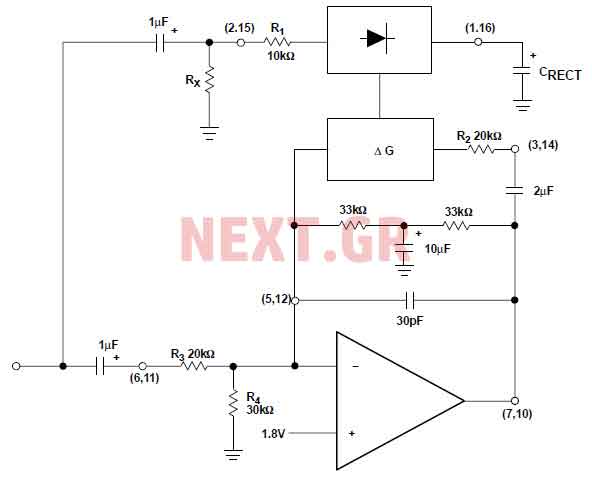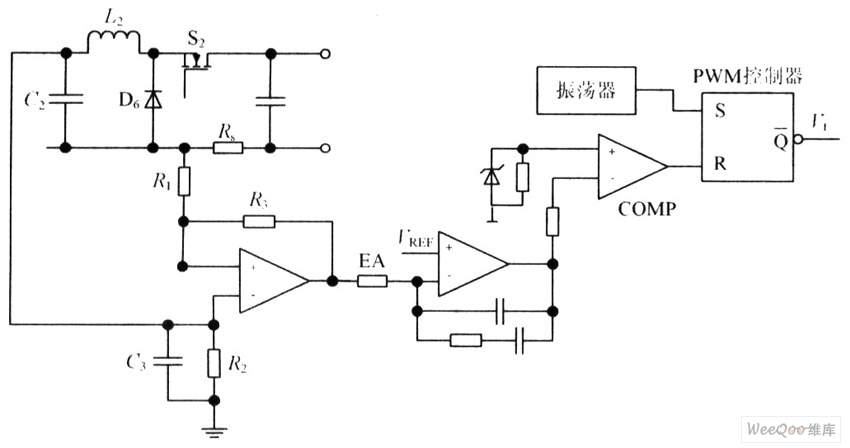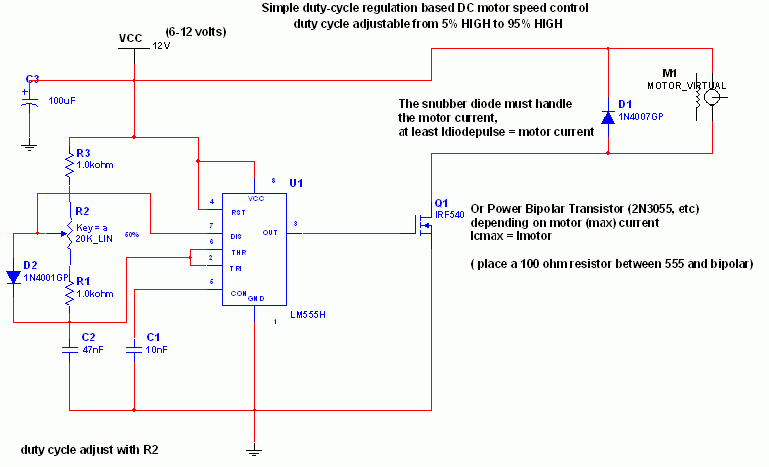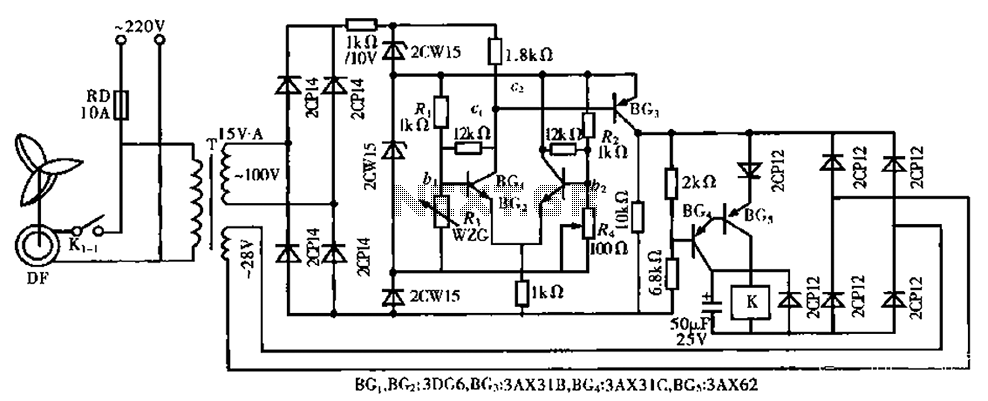
PWM Control Dimming Halogen Lamp
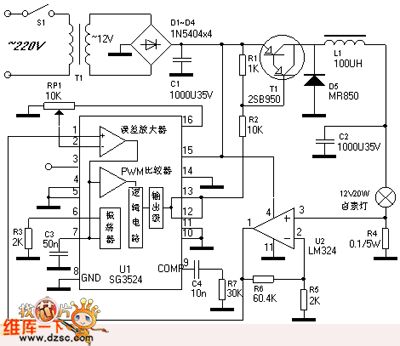
The PWM control dimming circuit for a halogen lamp is illustrated. The halogen lamp operates at a rated voltage of 12V with a nominal power of 20W. This dimmer circuit is capable of adjusting the intensity of the halogen lamp from zero to maximum brightness. The halogen lamp requires a transformation of the input frequency electricity (220V or 110V) into a 12V AC voltage, which is accomplished using a power transformer.
The PWM (Pulse Width Modulation) control dimming circuit is designed to regulate the brightness of a halogen lamp effectively. It operates by varying the duty cycle of the PWM signal, which controls the average power delivered to the lamp. The circuit typically consists of a microcontroller or a dedicated PWM controller, a power MOSFET, and a transformer.
In this setup, the power transformer steps down the high voltage AC supply to a safe low voltage AC level suitable for the halogen lamp. The PWM controller generates a square wave signal that modulates the power MOSFET. By adjusting the width of the pulses, the controller can alter the average voltage and current reaching the lamp, thereby controlling its brightness.
The circuit may also include additional components such as diodes for rectification, capacitors for filtering, and resistors for setting the PWM frequency. A heat sink may be necessary for the power MOSFET to dissipate heat generated during operation.
This dimming method is efficient, as it reduces power waste compared to traditional resistive dimmers. The PWM dimmer can provide smooth transitions in brightness without flickering, making it suitable for various lighting applications. Safety features such as overcurrent protection and thermal shutdown may also be integrated to ensure reliable operation and longevity of the components involved.The PWM control dimming halogen lamp circuit is as shown. Rated voltage of the halogen lamp is 12V, the nominal power is 20W, the dimmer circuit can adjust the intensity of halogen lamp from zero to maximum. Lighting halogen lamp always transforms the frequency electricity (220V or 110V) into 12V AC voltage by using the power transformer.
In order to provid.. 🔗 External reference
The PWM (Pulse Width Modulation) control dimming circuit is designed to regulate the brightness of a halogen lamp effectively. It operates by varying the duty cycle of the PWM signal, which controls the average power delivered to the lamp. The circuit typically consists of a microcontroller or a dedicated PWM controller, a power MOSFET, and a transformer.
In this setup, the power transformer steps down the high voltage AC supply to a safe low voltage AC level suitable for the halogen lamp. The PWM controller generates a square wave signal that modulates the power MOSFET. By adjusting the width of the pulses, the controller can alter the average voltage and current reaching the lamp, thereby controlling its brightness.
The circuit may also include additional components such as diodes for rectification, capacitors for filtering, and resistors for setting the PWM frequency. A heat sink may be necessary for the power MOSFET to dissipate heat generated during operation.
This dimming method is efficient, as it reduces power waste compared to traditional resistive dimmers. The PWM dimmer can provide smooth transitions in brightness without flickering, making it suitable for various lighting applications. Safety features such as overcurrent protection and thermal shutdown may also be integrated to ensure reliable operation and longevity of the components involved.The PWM control dimming halogen lamp circuit is as shown. Rated voltage of the halogen lamp is 12V, the nominal power is 20W, the dimmer circuit can adjust the intensity of halogen lamp from zero to maximum. Lighting halogen lamp always transforms the frequency electricity (220V or 110V) into 12V AC voltage by using the power transformer.
In order to provid.. 🔗 External reference

